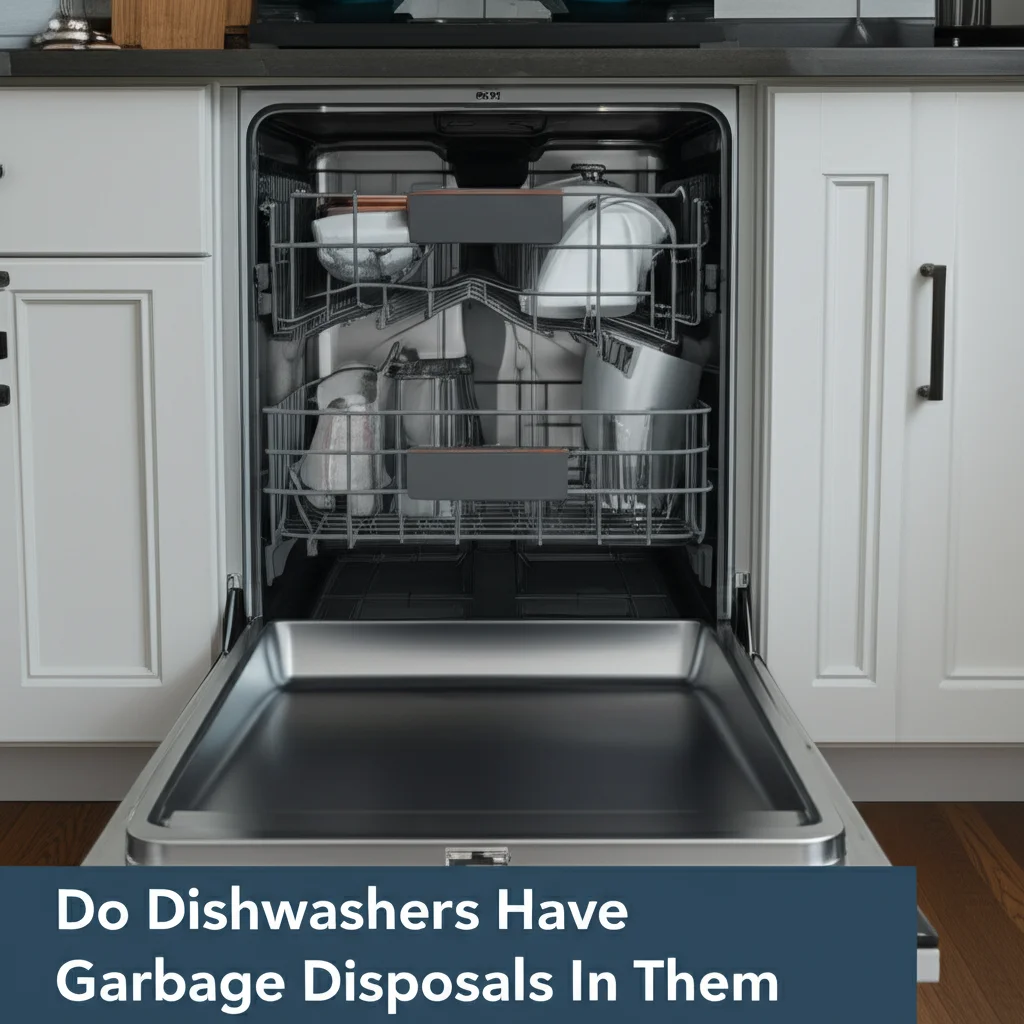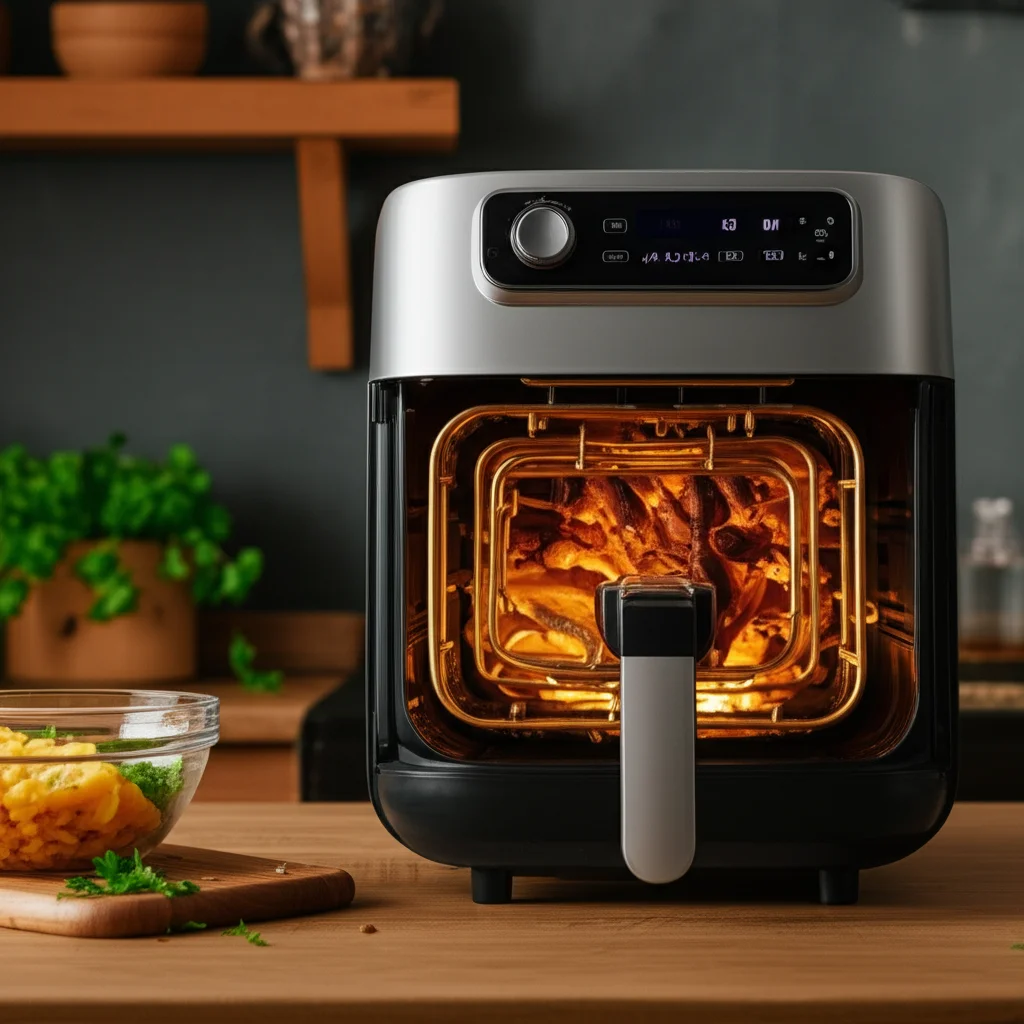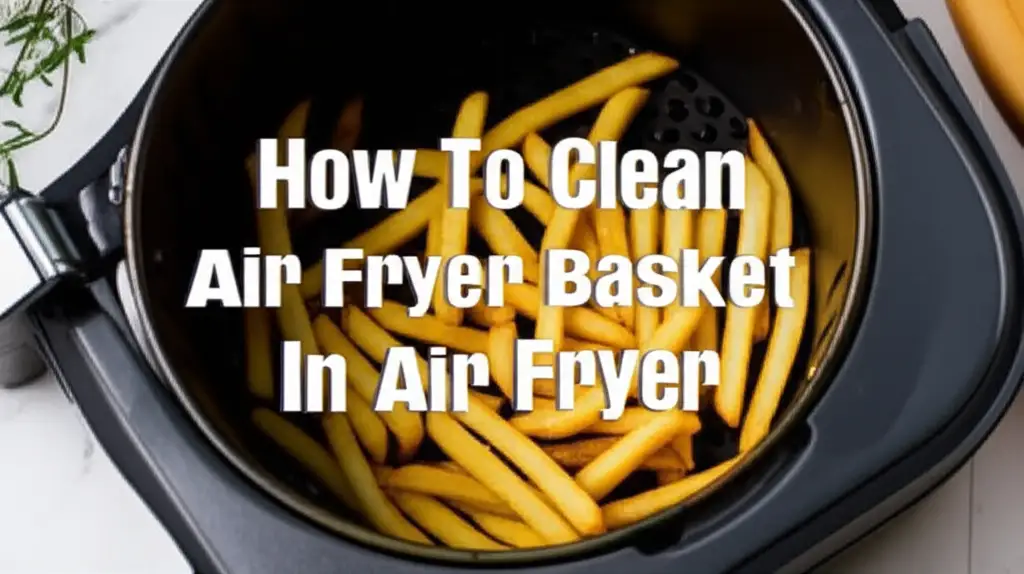· Todd Martin · Kitchen Appliances · 22 min read
Do Dishwashers Have Garbage Disposals In Them

Understanding Your Dishwasher: Do Dishwashers Have Garbage Disposals In Them?
Many homeowners wonder about their kitchen appliances. A common question that comes to my mind, and perhaps yours too, is whether dishwashers have built-in garbage disposals. It is a logical thought, especially considering that both appliances deal with food waste in a kitchen setting. You might imagine a powerful grinding mechanism inside your dishwasher, handling all the scraps. However, the truth about how dishwashers manage food particles is different from a traditional garbage disposal unit. Understanding this distinction is key to proper appliance care and preventing plumbing issues.
This article explores the inner workings of dishwashers. We discuss how these appliances handle food waste. We cover the different types of filtration systems they use. We also provide essential maintenance tips to keep your dishwasher running smoothly. We look into the proper way to connect a dishwasher to a separate garbage disposal. This guide helps you understand your dishwasher better.
Takeaway
- Dishwashers do not have built-in garbage disposals like the unit under your sink.
- They manage food waste using internal filtration systems, either self-cleaning or manual.
- Pre-rinsing dishes can reduce the burden on your dishwasher’s filter.
- Regular filter cleaning is vital to prevent clogs, odors, and ensure optimal performance.
- Dishwashers connect to a separate garbage disposal or a drain line for waste water removal.
Do Dishwashers Have Built-In Garbage Disposals?
No, dishwashers do not have built-in garbage disposals in the traditional sense. They do not contain a grinding chamber with spinning impellers designed to pulverize large food scraps. Instead, dishwashers use sophisticated filtration systems to capture and process smaller food particles. This design protects the pump and drain lines from clogs.
Exploring Dishwasher Design: What Handles Food Waste?
The way dishwashers handle food waste is often misunderstood. People sometimes think they can load heavily soiled dishes without pre-rinsing. They assume the machine will grind up all the bits. This idea stems from confusing the dishwasher with a garbage disposal unit. A kitchen garbage disposal grinds food waste into tiny pieces. It then flushes these down the drain. A dishwasher operates differently. It relies on water pressure and detergent to clean dishes. It uses a filtration system to catch any dislodged food particles.
Dishwashers are primarily designed to wash and rinse dishes. Their internal mechanisms are not built for heavy grinding. Introducing large food scraps can harm the appliance. It can lead to blockages and costly repairs. Understanding this basic difference is important for effective kitchen use. It helps you maintain your appliances correctly.
Understanding Internal Filtration Systems
Every dishwasher includes a filtration system. This system prevents food particles from recirculating onto your clean dishes. It also stops them from entering the drain line and causing clogs. There are two main types of these systems. Some dishwashers have self-cleaning filters. Others use manual clean filters. Both systems serve the same purpose. They capture food debris. However, they achieve this in different ways.
Self-cleaning filters often include a small grinder. This grinder pulverizes food waste into tiny bits. These tiny bits then get flushed away with the drain water. Manual clean filters require regular removal and cleaning. They collect food particles in a basket or mesh. We will discuss these types in more detail later. This filtration is critical for preventing issues.
Why No Dedicated Disposal Unit?
The absence of a dedicated garbage disposal unit in a dishwasher is intentional. Dishwashers need to maintain specific water temperatures and pressures. These conditions are necessary for effective cleaning. A large grinding mechanism would complicate the internal design. It would also increase noise levels significantly. A dishwasher’s primary goal is sanitization and cleanliness. It is not waste disposal.
Adding a heavy-duty disposal would also increase the cost and complexity of the appliance. It would make maintenance harder. Instead, manufacturers focus on efficient washing cycles. They also focus on effective filtration. This design choice optimizes dishwashing performance. It also extends the appliance’s lifespan. Remember, your dishwasher cleans dishes. Your garbage disposal handles food scraps.
The Two Main Types of Dishwasher Filtration Systems
Dishwashers use internal filters to manage food particles. These filters ensure your dishes come out clean. They also protect the internal plumbing of the appliance. There are two main types of filtration systems found in modern dishwashers: self-cleaning filters and manual clean filters. Each type has its own advantages and maintenance requirements. Knowing which type your dishwasher uses helps you care for it properly. This knowledge prevents common issues like odors or poor cleaning performance. Understanding these systems ensures your appliance works as it should.
Self-Cleaning Filter Systems (Hard Food Disposers)
Some dishwashers feature a “self-cleaning” filter system. These systems are sometimes referred to as hard food disposers. This name can be misleading. They do not work like a full-sized garbage disposal. Instead, they include a small, internal shredder or grinder. This component breaks down larger food particles. It grinds them into smaller pieces. Water then flushes these tiny bits down the drain.
Dishwashers with self-cleaning filters are often louder during operation. The grinding action creates noise. This system reduces the need for manual filter cleaning. However, it does not eliminate it entirely. Tougher food scraps can still accumulate. Over time, these can cause blockages. These dishwashers may also use more water. They might use more energy too. This is due to the grinding and extra flushing. While convenient, they still require some attention.
Manual Clean Filter Systems
Manual clean filter systems are common in many modern dishwashers. These systems use a mesh screen or filter basket. This filter collects food particles, grease, and other debris. The filter prevents these items from recirculating during the wash cycle. It also keeps them from clogging the drain pump. Manual clean filters are typically quieter than self-cleaning ones. They do not have a grinding mechanism. This design contributes to a more peaceful kitchen environment.
The key difference is the need for regular manual cleaning. You must remove and rinse this filter periodically. This task ensures optimal performance. It also prevents odors and poor wash results. Neglecting to clean a manual filter can lead to a smelly dishwasher. It can also cause dishes to come out dirty. Many consumers prefer these systems for their quiet operation. They also appreciate their energy efficiency.
Benefits and Drawbacks of Each
Both filter types offer distinct benefits and drawbacks. Self-cleaning filters offer convenience. They require less frequent hands-on maintenance. They can handle a wider range of food debris. However, they are generally louder. They might also consume more resources. Manual clean filters are quieter and more energy-efficient. They require active participation from the user. You must regularly remove and clean the filter. This maintenance is essential for peak performance.
Choosing between the two depends on your priorities. Do you value convenience over quiet operation? Are you willing to perform regular maintenance for a quieter appliance? Knowing these differences helps you make an informed decision. It also guides your appliance care routine. For instance, if your dishwasher runs quietly, it likely has a manual filter. You will need to clean it regularly to avoid issues. Consider also how plastic tub dishwashers might affect noise levels compared to stainless steel.
The Role of Pre-Rinsing: How Much is Enough?
The topic of pre-rinsing dishes before loading them into the dishwasher often sparks debate. Some people meticulously rinse every plate. Others scrape off large scraps and load them directly. The necessity of pre-rinsing largely depends on your dishwasher’s filtration system. It also depends on the amount of food debris on your dishes. Understanding the right balance can save water and energy. It also helps maintain your dishwasher’s efficiency. I find that a light scrape is usually enough for most dishes.
Modern dishwashers are designed to handle some food residue. They do not require sparkling clean plates. However, excessive food particles can overwhelm the filtration system. This can lead to clogs and poor cleaning results. Knowing when and how much to pre-rinse is a valuable skill. It helps extend the life of your appliance.
When Pre-Rinsing is Necessary
While most new dishwashers can handle small food particles, some situations demand pre-rinsing. If your dishes have large, sticky, or hard food scraps, a quick rinse is beneficial. Think about leftover rice, congealed sauces, or large vegetable pieces. These items can easily clog filters or spray arms. They may also damage the internal pump. I always recommend scraping off all visible solids. This simple step greatly reduces the burden on your dishwasher.
Pre-rinsing is also important if you tend to run your dishwasher infrequently. Food left on dishes for days can dry and harden. This makes it much harder for the dishwasher to remove. It also creates a breeding ground for bacteria and odors. If you are not running a wash cycle immediately, a quick rinse can prevent food from caking on. This ensures a more effective wash cycle when you do run it.
When to Skip Pre-Rinsing
Many dishwasher detergents contain enzymes. These enzymes need food particles to work effectively. They latch onto food and break it down. If dishes are too clean, these enzymes have nothing to cling to. This can lead to less effective cleaning. Skipping excessive pre-rinsing saves water and energy. It allows the detergent to do its job properly. Most manufacturers advise simply scraping off large food pieces. They do not recommend a full rinse.
For dishwashers with robust self-cleaning filters, minimal pre-rinsing is often sufficient. These machines are built to pulverize many types of food debris. Over-rinsing is unnecessary and wasteful. It is also important to consider your water heater. If your dishwasher has its own water heater for optimum temperature, over-rinsing cold water into it might slightly affect its heating efficiency initially. Focus on removing anything that could visibly block a drain. Leave the rest for your dishwasher to handle.
Connecting Your Dishwasher to a Garbage Disposal
Many homes have both a dishwasher and a garbage disposal in the kitchen. These two appliances often work together, but not in the way some people might think. The dishwasher does not feed directly into the disposal’s grinding chamber. Instead, the dishwasher’s drain line connects to the garbage disposal unit. This setup allows the dishwasher to expel dirty water and small food particles into the disposal’s drain. The disposal then helps process these particles before they enter the main plumbing system. I find this connection to be very convenient.
Understanding this connection is crucial for proper installation and maintenance. An incorrect connection can lead to drainage issues. It can cause dirty water to back up into the dishwasher. It can also result in unpleasant odors. We will explore the right way to set up this connection. We will also discuss common pitfalls to avoid.
Proper Installation Techniques
Connecting a dishwasher drain line to a garbage disposal requires careful attention. The most common method involves a drain hose from the dishwasher. This hose attaches to a dedicated port on the garbage disposal. This port is usually located on the side of the disposal unit. Before connecting, it is crucial to ensure the knockout plug inside the disposal’s port is removed. Many new disposals come with this plug in place. Failure to remove it will prevent water from draining from the dishwasher. This is a common installation mistake.
It is also important to create a high loop or air gap in the dishwasher drain hose. This prevents dirty water from the sink or disposal from flowing back into the dishwasher. The high loop involves securing the drain hose as high as possible under the sink. An air gap device is a visible fixture on the countertop. It provides a physical break in the drain line. Both methods prevent cross-contamination. They protect your dishwasher from potential backflow. This ensures clean dishes and prevents health hazards. This process is detailed in guides on how to connect dishwasher drain to garbage disposal.
Avoiding Backflow and Clogs
Preventing backflow and clogs is paramount for a functional dishwasher-disposal setup. The high loop or air gap system is your first line of defense against backflow. Without it, dirty water from the sink or disposal can easily siphon back into your dishwasher. This leaves residue on your “clean” dishes. It can also introduce foul odors. I have seen many cases where a missing high loop caused persistent odor issues.
To prevent clogs, ensure the garbage disposal itself is clear before running the dishwasher. If the disposal is full of food waste, the dishwasher’s discharge will struggle to drain. This can lead to standing water in the dishwasher. It can also cause overflows. Always run the garbage disposal for a few seconds with cold water before and after running the dishwasher. This clears the path for the dishwasher’s drain water. It ensures smooth and efficient drainage. Regular maintenance of your disposal also plays a role in preventing dishwasher clogs.
Essential Maintenance for a Clog-Free Dishwasher Drain
A dishwasher is a hardworking appliance. It handles dirty dishes daily. To keep it running efficiently and prevent common issues like clogs and odors, regular maintenance is essential. While dishwashers do not have a full garbage disposal, their internal filters need attention. These filters are the primary defense against food particle buildup. Neglecting them can lead to poor cleaning performance. It can also result in an unpleasant smell emanating from your kitchen. I always tell friends that a little proactive care goes a long way.
Proper maintenance involves more than just loading dishes. It includes cleaning the filter, addressing food particle buildup, and using the right cleaning agents. A well-maintained dishwasher works better. It also lasts longer. Let’s delve into the specific steps you can take to ensure a clog-free drain and a fresh-smelling appliance.
Cleaning Your Dishwasher’s Filter
The dishwasher filter captures food particles and debris. Over time, this filter can accumulate a significant amount of grime. This buildup reduces water flow. It impairs cleaning effectiveness. It also causes odors. Cleaning your dishwasher filter is a simple yet crucial task. Most dishwasher filters are located at the bottom of the tub. They are usually easy to access and remove.
To clean a manual filter, twist or unlatch it to remove it. Rinse it under warm running water. Use a soft brush or old toothbrush to scrub away any stuck-on food. Dish soap can help cut through grease. Be thorough, but gentle, to avoid damaging the mesh. Once clean, reinstall the filter securely. For self-cleaning filters, while less frequent, check for any large debris that might have bypassed the shredder. Clear any visible blockages. This simple step, done regularly, can prevent many common dishwasher problems. For more detailed instructions on cleaning similar kitchen components, you might review guides like how to clean garbage disposal.
Addressing Food Particle Buildup
Even with a clean filter, food particles can accumulate in other areas of the dishwasher. Spray arms can get clogged with hard water deposits or tiny food bits. The drain hose can develop grease buildup over time. These issues contribute to slow drainage and reduced cleaning power. Periodically inspect the spray arms. Use a toothpick or small wire to clear any blocked holes. This ensures even water distribution during cycles.
To tackle grease and grime in the drain hose and interior, run a dishwasher cleaning cycle. You can use a commercial dishwasher cleaner. Alternatively, use a cup of white vinegar placed in a bowl on the top rack. Run a hot water cycle. The vinegar helps dissolve grease and mineral deposits. It also combats odors. Following this, sprinkle a cup of baking soda on the bottom of the empty tub. Run a short hot cycle. This further helps neutralize smells. These steps ensure all parts of your dishwasher are free from buildup. For specific odor issues, consider a guide on how to clean smelly garbage disposal or even how to clean garbage disposal with lemon, as principles of preventing odors apply across drain systems.
Troubleshooting Common Dishwasher Drain Issues
Even with proper maintenance, dishwashers can sometimes encounter drainage problems. A slow-draining dishwasher or standing water at the bottom is frustrating. It signals an issue in the drainage system. Understanding common causes can help you quickly identify and fix the problem. These issues often relate to clogged filters, drain hoses, or the connected garbage disposal. I have personally tackled several of these problems in my own home.
Addressing these issues promptly prevents them from worsening. It also ensures your dishes get properly cleaned and sanitized. We will discuss how to pinpoint the source of a drainage problem. We will also cover simple DIY fixes for minor clogs. Knowing when to call a professional plumber is also key.
Identifying the Source of the Problem
When your dishwasher does not drain, start by checking the easiest potential culprits. First, examine the dishwasher filter. A heavily clogged filter is a very common cause of drainage issues. Remove it and clean it thoroughly as described previously. Next, check the drain hose connection to your garbage disposal or main drain. Ensure the high loop is intact and that the hose is not kinked or crimped. A bent hose will restrict water flow.
If your dishwasher drains into a garbage disposal, verify the disposal is not clogged. Run the disposal for a minute with cold water to clear it. A clogged disposal can cause backflow into the dishwasher. If you recently installed a new disposal, check if the knockout plug for the dishwasher connection was removed. This plug is a frequent oversight. Inspect the air gap (if present) on your countertop. Ensure it is not blocked by debris. By systematically checking these points, you can often find the root cause.
Simple Fixes for Minor Clogs
For minor clogs within the dishwasher’s drain system, several simple fixes can help. If the filter is clean and the drain hose appears fine, the clog might be further down. You can try a natural solution. Pour one cup of baking soda into the bottom of the empty dishwasher. Follow it with two cups of white vinegar. Let this mixture sit overnight. The chemical reaction can help break down grease and minor blockages. In the morning, run a hot water cycle to flush it out.
Another approach for a stubborn hose clog, if accessible, is to disconnect the drain hose from the disposal or drain. Place the end in a bucket. Try blowing forcefully through the hose to dislodge the clog. Be prepared for some water to come out. If you have a shop vac, you can also use it to suck out the clog from the drain hose. For issues related to garbage disposal odors, specific remedies are available. These include using ice and salt or citrus peels to clean and freshen the unit.
When to Call a Professional
Sometimes, a dishwasher drain issue is beyond simple DIY fixes. If you have checked all the common culprits and the problem persists, it may indicate a deeper plumbing issue. This could be a clog in the main house drain line. It might also be a faulty drain pump or motor within the dishwasher itself. These require specialized tools and expertise.
If water continues to back up, if strange noises come from the dishwasher during draining, or if the appliance fails to start, it is time to call a professional. A plumber can diagnose and clear main line clogs. An appliance repair technician can fix internal component failures. Attempting complex repairs without proper knowledge can cause more damage. It can also void your appliance warranty. Knowing when to seek expert help saves time, money, and frustration in the long run.
Optimizing Dishwasher Performance: Tips for Longevity
Getting the most out of your dishwasher involves more than just pressing a button. Proper usage and care significantly impact its cleaning performance and overall lifespan. Just like any other major appliance, your dishwasher benefits from thoughtful handling. My goal is always to make my appliances last as long as possible. This saves money and reduces waste.
These best practices help prevent common issues. They ensure sparkling clean dishes every time. They also prolong the life of your appliance. Let’s explore some key tips that optimize your dishwasher’s performance and ensure its longevity.
Proper Loading Techniques
How you load your dishwasher truly matters. Proper loading ensures water and detergent reach all surfaces of your dishes. It prevents overcrowding, which can lead to inefficient cleaning and potential damage. Place larger items like plates and serving dishes along the bottom rack. Face their soiled surfaces towards the center spray arm. Cups, glasses, and bowls should go on the top rack. Turn them upside down to prevent water pooling. Utensils belong in the cutlery basket, handle down for forks and spoons, and handle up for knives for safety.
Avoid blocking the spray arms. These arms need to rotate freely to distribute water. Run a quick check before starting the cycle. Ensure nothing obstructs their movement. Overloading the dishwasher also strains the motor and pump. This reduces cleaning effectiveness. It can also lead to premature wear and tear. A properly loaded dishwasher cleans better and works more efficiently.
Using the Right Detergent
The type and amount of detergent you use are critical for dishwasher performance. Always use detergents specifically designed for dishwashers. Hand dish soap creates excessive suds. These suds can overflow the machine and damage internal components. Different dishwashers may also recommend specific detergent types. Read your appliance manual. It often provides guidance on the best detergent for your model.
The right amount of detergent is equally important. Too little detergent results in dirty dishes. Too much can leave a residue on dishes and inside the dishwasher. Hard water areas may require slightly more detergent or a rinse aid. A rinse aid helps prevent water spots and aids drying. It allows water to sheet off dishes. Adjust detergent use based on your water hardness and the soil level of your dishes. Experiment slightly to find the optimal amount for your specific conditions.
Regular Inspections
Beyond cleaning the filter, regular inspections can catch potential problems early. Periodically check the spray arms for clogs. Clear any debris from the tiny holes. Inspect the rubber gasket around the dishwasher door. This gasket forms a seal. A damaged gasket can lead to leaks. Clean it regularly to prevent mold and mildew buildup.
Also, observe your dishwasher’s performance. Notice any unusual noises, diminished cleaning power, or persistent odors. These signs indicate a potential issue. Addressing them early can prevent more significant problems. By incorporating these regular checks and best practices, you can ensure your dishwasher remains a reliable and efficient helper in your kitchen for many years. Maintaining the proper decibel rating on dishwashers, for example, often correlates with healthy appliance function, as outlined in articles like what is the decibel rating on dishwashers.
FAQ Section
Q1: Can I put large food scraps down my dishwasher?
No, you should not put large food scraps into your dishwasher. Dishwashers are not designed to pulverize large food particles like a garbage disposal. They rely on internal filters to catch smaller bits. Large scraps can clog the filter, spray arms, or pump. This leads to drainage issues, poor cleaning, and potential damage to the appliance. Always scrape plates clean before loading them.
Q2: What happens if I don’t clean my dishwasher filter?
If you do not clean your dishwasher filter regularly, several problems can occur. Food particles and grease will build up, restricting water flow and reducing cleaning efficiency. Your dishes may come out dirty, gritty, or with food residue. A neglected filter also creates unpleasant odors inside the dishwasher. It can also lead to clogs in the drain line.
Q3: How often should I clean my dishwasher filter?
For manual clean filters, aim to clean it every few weeks or once a month, depending on how often you use your dishwasher and how dirty your dishes are. If you notice odors or dirty dishes, clean it more frequently. Self-cleaning filters require less attention, but still check them periodically for any stubborn debris that might accumulate.
Q4: Why does my dishwasher smell bad?
A bad smell in your dishwasher usually indicates food particle buildup. This often occurs in the filter, drain hose, or other internal components. These decaying food particles create foul odors. Hard water deposits and mildew can also contribute to the smell. Regular filter cleaning, running cleaning cycles with vinegar and baking soda, and scraping dishes thoroughly can eliminate odors.
Q5: Is it better to have a self-cleaning filter or a manual one?
Neither is inherently “better”; it depends on your preferences. Self-cleaning filters offer convenience and require less hands-on maintenance, but they can be louder and sometimes less energy-efficient. Manual clean filters are generally quieter and more energy-efficient but require regular removal and cleaning. Both effectively manage food waste if properly maintained.
Q6: Do all dishwashers have filters?
Yes, all modern dishwashers have some form of filtration system. This system is essential for preventing food particles from recirculating onto clean dishes and from clogging the drain pump. Whether it’s a self-cleaning shredder or a manual removable filter, every dishwasher relies on this mechanism to ensure effective and hygienic cleaning.
Conclusion
The common question, “Do dishwashers have garbage disposals in them?” has a clear answer: no, they do not function as traditional garbage disposal units. Instead, dishwashers rely on efficient internal filtration systems to manage food waste. These systems, whether self-cleaning or manual, are crucial for capturing food particles and preventing them from recirculating or clogging the drain. Understanding this fundamental difference is key to properly maintaining your appliance and ensuring its longevity.
Effective dishwasher performance hinges on these filtration systems. Regular cleaning of the filter, along with proper loading techniques and the correct use of detergent, are vital steps. These actions prevent unpleasant odors, ensure sparkling clean dishes, and avoid costly plumbing issues. If your dishwasher connects to a separate garbage disposal, ensure the connection is correct and clear of obstructions.
By prioritizing consistent maintenance and smart usage habits, you can keep your dishwasher running smoothly for many years. Embrace these simple yet impactful practices to maintain a clean kitchen and extend the life of your essential appliance.
- Dishwasher Maintenance
- Garbage Disposal
- Kitchen Plumbing
- Appliance Care
- Food Waste Management
- Home Essentials





